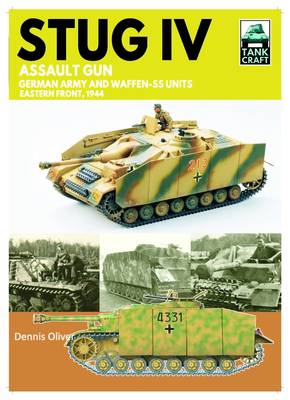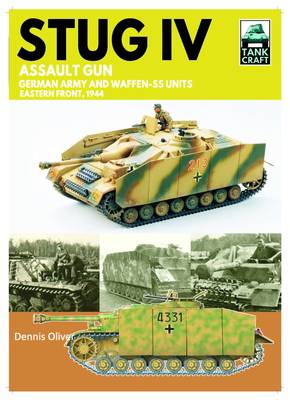
- Afhalen na 1 uur in een winkel met voorraad
- Gratis thuislevering in België vanaf € 30
- Ruim aanbod met 7 miljoen producten
- Afhalen na 1 uur in een winkel met voorraad
- Gratis thuislevering in België vanaf € 30
- Ruim aanbod met 7 miljoen producten
Zoeken
€ 26,95
+ 53 punten
Omschrijving
From their introduction in 1940, the Wehrmacht's Sturmgeschütz assault guns played an essential role in the campaigns of the Blitzkrieg era, the titanic struggles in Russia and the final defensive battles of the war. Evolving from a mobile bunker-buster, armed with a short-barrelled howitzer, the Sturmgeschütz was up-armoured and up-gunned and by 1943 it was increasingly employed as a tank killer. In 1944, largely as an emergency quick-fix, the Sturmgeschütz IV entered service and over 1,000 examples had been built by the end of the war. As the Wehrmacht's resources continued to decline the assault guns were thrown into every operation and increasingly substituted for gun tanks in official unit establishments. In the third volume in the TankCraft series to examine the Sturmgeschütz, Dennis Oliver employs official documentation and unit histories to investigate the formations that operated the Sturmgeschütz IV and uses archive photos and extensively researched colour illustrations to examine the markings, camouflage and technical aspects of the vehicles that served on the Eastern Front during the last months of the campaign. A key section of his book displays available model kits and aftermarket products, complemented by a gallery of beautifully constructed and painted models in various scales. Technical details as well as modifications introduced during production and in the field are also examined, providing everything the modeller needs to recreate an accurate representation of these historic vehicles.
Specificaties
Betrokkenen
- Auteur(s):
- Uitgeverij:
Inhoud
- Aantal bladzijden:
- 64
- Taal:
- Engels
- Reeks:
Eigenschappen
- Productcode (EAN):
- 9781036140625
- Verschijningsdatum:
- 30/01/2026
- Uitvoering:
- Paperback
- Formaat:
- Trade paperback (VS)
- Afmetingen:
- 210 mm x 298 mm

Alleen bij Standaard Boekhandel
+ 53 punten op je klantenkaart van Standaard Boekhandel
Beoordelingen
We publiceren alleen reviews die voldoen aan de voorwaarden voor reviews. Bekijk onze voorwaarden voor reviews.








